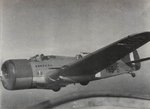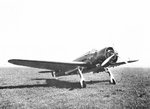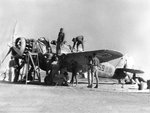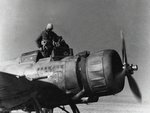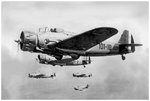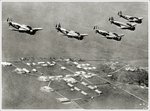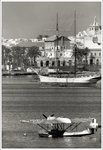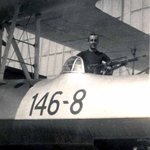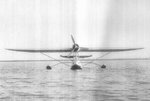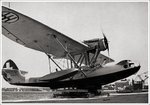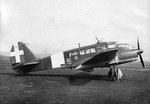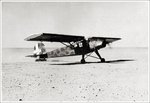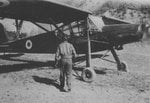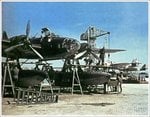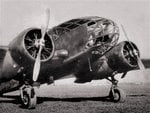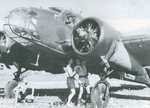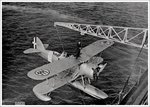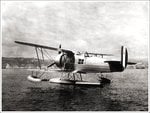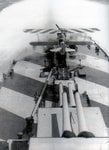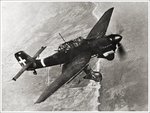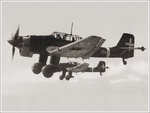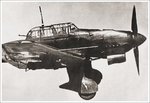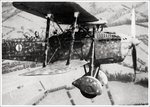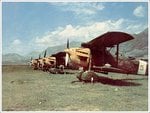Breda Ba-64
A development of the earlier Ba.27 fighter (1932), the Ba.64 was designed in 1933 to requirements set out by the Regia Aeronautica for an aircraft able to undertake multiple roles: fighter, bomber and reconnaissance. The aircraft featured an all-metal, low-wing cantilever monoplane with a wire braced tail unit and fixed tail wheel. The open cockpit was placed well forward on the fuselage in line with the wing roots to provide an excellent field of vision down as well as forward. The headrest behind the cockpit was extended as a streamlined fairing all the way down the fuselage upper decking to the tail. Two prototypes powered by a 522 kW (700 hp) Bristol Pegasus were developed, the first as a two-seater bomber with an armament of four 7.7 mm (0.303 in) machine guns in the wings and up to 400 kg (882 lb) of bombs in racks under the wings. The second was a single-seater fighter configuration fitted with a semi-retractable main landing gear that when in its rearward retracted position, provided less drag as well as protection in case of a wheels-up landing.
The first prototype flew in 1934 but flight tests revealed a lacklustre performance despite the use of a variable-pitch, three-blade propeller. Nonetheless, a limited production order was placed for a composite variant that combined the two-place configuration of the bomber (although a small number of single-seaters were built in the initial series) with the semi-retractable fighter landing gear. The production variant was powered by a 485 kW (650 hp) Alfa Romeo 125C and although single-seat variants were built, all the Ba.64s were converted to two-place bomber/attack aircraft with a single 7.7 mm (0.303 in) machine gun mounted in the rear cockpit. Production of the 42 Ba.64s was complete by 1936.
Source: Breda Ba.64 | Facebook
A development of the earlier Ba.27 fighter (1932), the Ba.64 was designed in 1933 to requirements set out by the Regia Aeronautica for an aircraft able to undertake multiple roles: fighter, bomber and reconnaissance. The aircraft featured an all-metal, low-wing cantilever monoplane with a wire braced tail unit and fixed tail wheel. The open cockpit was placed well forward on the fuselage in line with the wing roots to provide an excellent field of vision down as well as forward. The headrest behind the cockpit was extended as a streamlined fairing all the way down the fuselage upper decking to the tail. Two prototypes powered by a 522 kW (700 hp) Bristol Pegasus were developed, the first as a two-seater bomber with an armament of four 7.7 mm (0.303 in) machine guns in the wings and up to 400 kg (882 lb) of bombs in racks under the wings. The second was a single-seater fighter configuration fitted with a semi-retractable main landing gear that when in its rearward retracted position, provided less drag as well as protection in case of a wheels-up landing.
The first prototype flew in 1934 but flight tests revealed a lacklustre performance despite the use of a variable-pitch, three-blade propeller. Nonetheless, a limited production order was placed for a composite variant that combined the two-place configuration of the bomber (although a small number of single-seaters were built in the initial series) with the semi-retractable fighter landing gear. The production variant was powered by a 485 kW (650 hp) Alfa Romeo 125C and although single-seat variants were built, all the Ba.64s were converted to two-place bomber/attack aircraft with a single 7.7 mm (0.303 in) machine gun mounted in the rear cockpit. Production of the 42 Ba.64s was complete by 1936.
Source: Breda Ba.64 | Facebook

